Destination Earth Use Case
Air Quality

Information
Company: Forschungszentrum Jülich
Destination Earth Use Case DE_370C
Use Case Overview
Weather events like heat waves or droughts are frequently accompanied by severe air pollution. For example, high temperatures and strong solar irradiation during heat waves favor the production of ground-level ozone (O3) and can thus lead to extreme O3 concentrations posing a threat to humans and the environment. In addition, stable wintertime anticyclones cause extreme particulate matter (PM) concentrations due to increase residential heating and reduced dynamic mixing of the air mass. Hence, high-resolution air quality forecasts and analyses are key for national and regional environmental agencies to understand the underlying phenomena, the cause of air pollution, and potentials to initiate appropriate measures to reduce air pollution exposure during such extreme events.
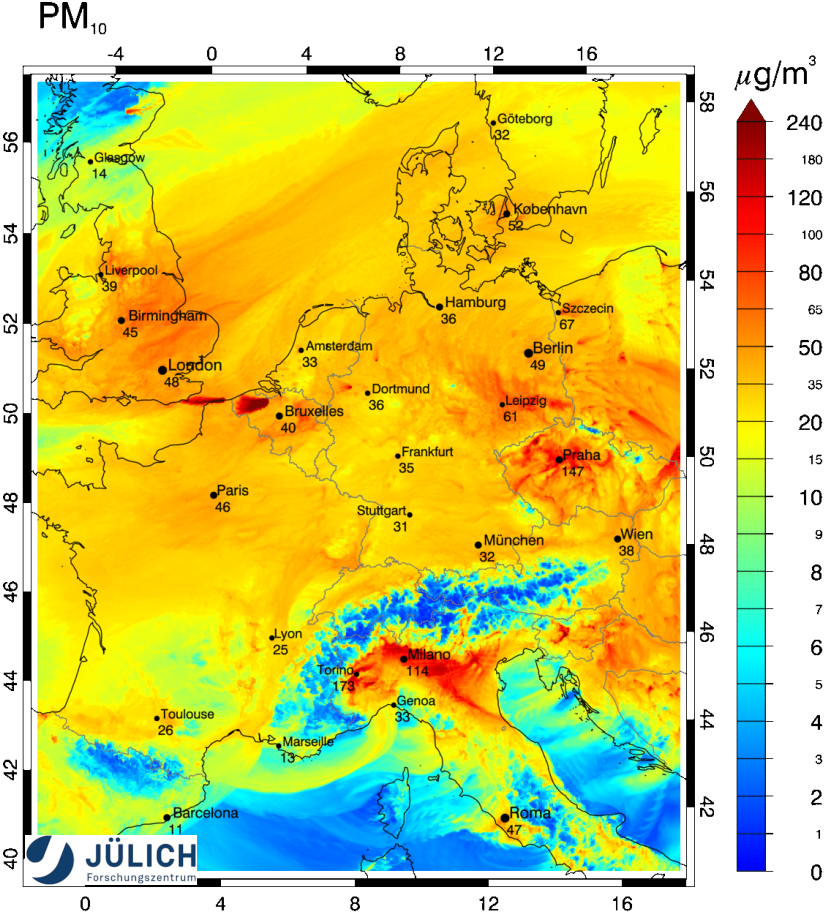
Figure 1: EURAD-IM analysis of the daily maximum concentration of PM10 on 7 February 2023 at ground level. European air quality thresholds imply that PM10 concentrations must not exceed 50 µg/m³ on more than 35 days in a year and that the annual PM10 average concentration must nowhere exceed 40 µg/m³.
Figure 1: EURAD-IM analysis of the daily maximum concentration of PM10 on 7 February 2023 at ground level. European air quality thresholds imply that PM10 concentrations must not exceed 50 µg/m³ on more than 35 days in a year and that the annual PM10 average concentration must nowhere exceed 40 µg/m³.
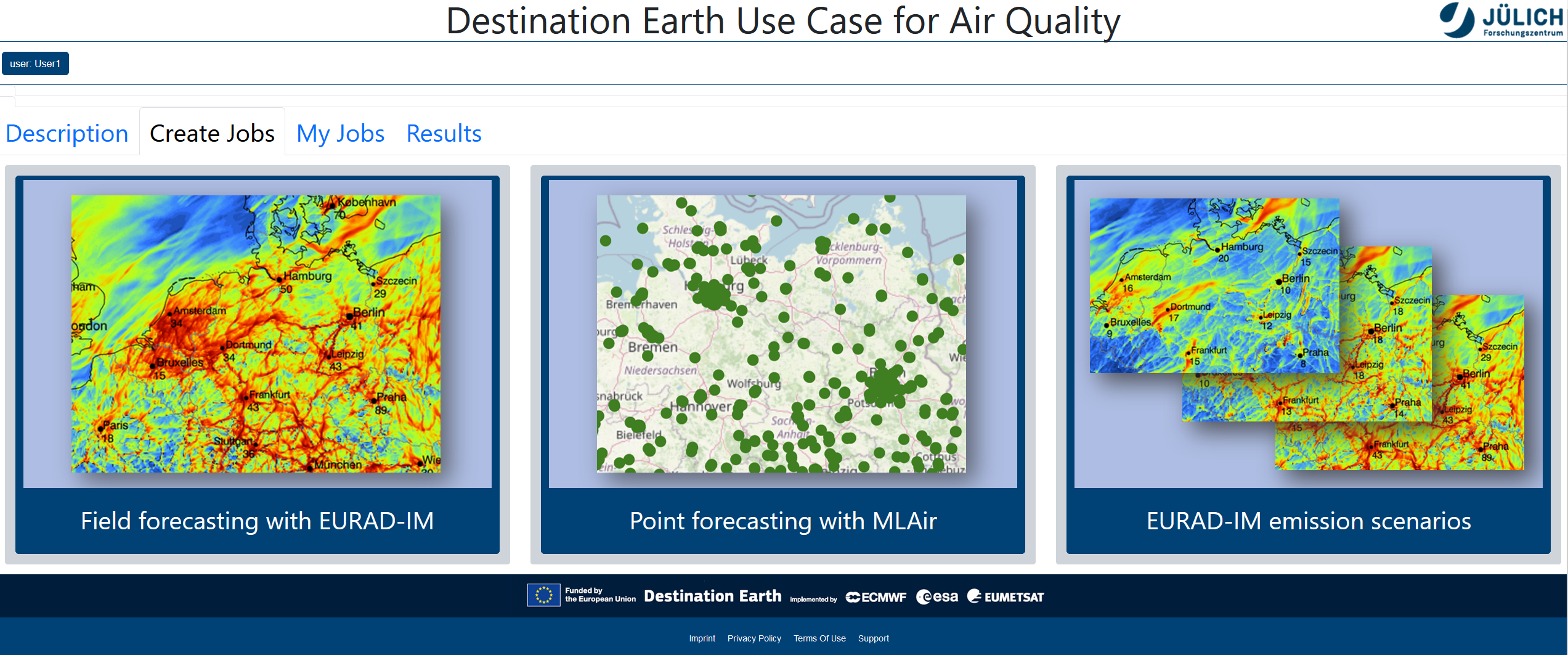
Figure 2: DestinE Air Quality user interface, illustrating the different options of air quality forecasts.
Figure 2: DestinE Air Quality user interface, illustrating the different options of air quality forecasts.
In this context, the DestinE air quality use case develops an interactive air quality forecasting analysis system to assess the population exposure. The system is based on a web-based user interface that will trigger high-resolution air quality analyses and forecasts produced the chemistry transport model EURAD-IM (European Air pollution Dispersion – Inverse Model) and with the help of machine learning methods. The machine learning approaches allow fast and precise air quality forecasts at the location of air pollution monitoring stations by fusing weather forecasts and ground-level observations as well as field forecasts at kilometer-scale. At the same time, EURAD-IM provides detailed forecasts and analyses of air quality in Europe on the spatial scale governed by the digital twin. The system further allows for detailed emission modulation illustrating the effect of mitigation scenarios on air pollution.
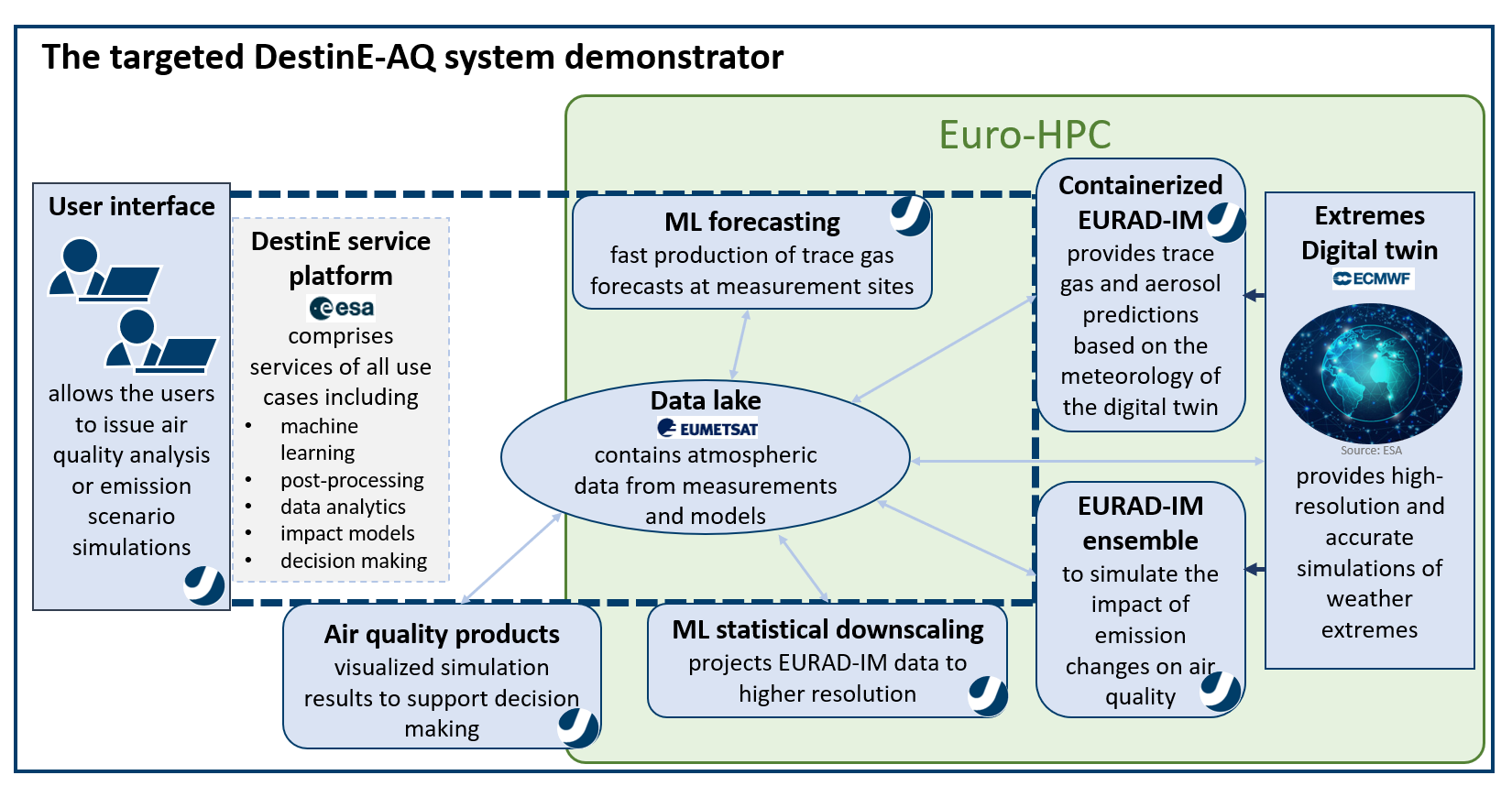
Figure 3: Envisioned DestinE Air Quality use case system. Here, ML stands for machine learning.
Figure 3: Envisioned DestinE Air Quality use case system. Here, ML stands for machine learning.
The use case combines the advantages of machine learning applications and numerical modeling with EURAD-IM. The machine learning modules are based on neural network approaches exploiting longtime time datasets and allow for air quality predictions at the location of European observation stations. Likewise, statistical downscaling of coarse resolution numerical predictions to high resolution ground-level fields can be generated. The EURAD-IM is a chemistry transport model that can be executed to include three-dimensional variational data assimilation to combine the best available information on the atmospheric state. As base for air quality simulations serve, among others, meteorological data from the DestinE Extremes Digital Twin, in situ observations, and high-resolution anthropogenic emission data and temporal emission profiles. The ensemble generation will feature a modular emission control panel in the user interface that allows detail modifications of the emission data on an emission sector basis (e.g.: industry, road transport, agriculture etc.). All use case components will be run flexible and interchangeable, whereas machine learning tools are run on the service front end, while the EURAD-IM will directly couple to the model data of the DestinE Digital Twin.
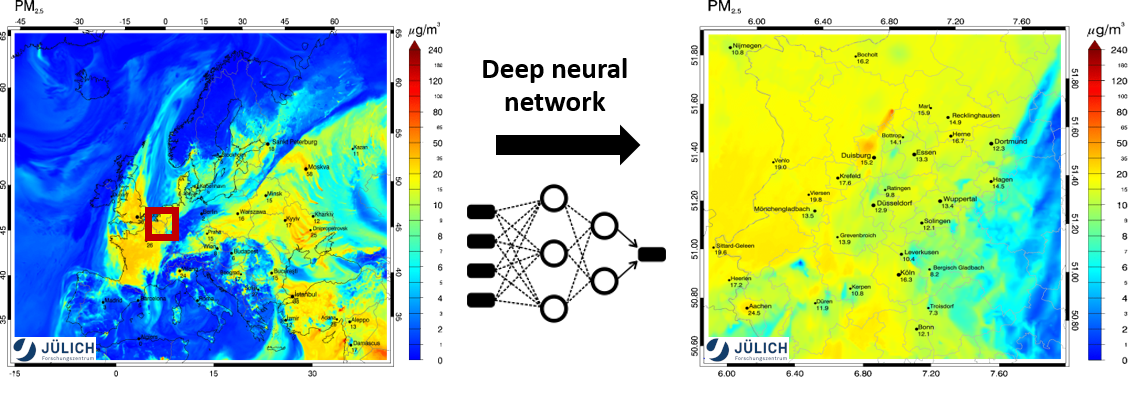
Figure 4: Machine learning downscaling for high resolution air quality predications.
Figure 4: Machine learning downscaling for high resolution air quality predications.
To demonstrate the information gained, two demonstrator simulations are planned to be delivered to the DE_370C core users LANUV (North Rhine-Westphalia Office of Nature, Environment and Consumer Protection) and UBA (German Environment Agency). Here, the focus is placed on high-resolution simulations in the areas of North Rhine-Westphalia and Berlin-Brandenburg. The first demonstrator prediction covers an O3 episode in July/August 2018, while the second demonstrator simulation analyses a PM episode in Winter 2016/2017. Both demonstrators are designed in close exchange with the core users to incorporate the required output formats, ease of simulation control (i.e. triggering and output handling) and emission scenario design. The emission scenarios will support the understanding of the importance of individual polluters to hazardous air pollution and therewith supports the planning of new regional air pollution mitigation actions. The selected emission scenarios are:
- The standard scenario: Simulation of air quality with business-as-usual emissions.
- The no-emission scenario: Simulation neglecting all anthropogenic emissions in the target domain.
- The working from home and energy saving scenario: Following the role model of the Covid-19 pandemic, road transport and residential emissions are reduced by 50 % and 20 %, respectively.
- The industry scenario: Restriction of industrial activities and reduction of power generation, industry, fugitives, and solvents emissions by 70 %.
- The electro mobility scenario: Replacement of current car fleet by low-carbon emission vehicles. Diesel and gasoline emissions are reduced by 25 % and 80 %, respectively, while abrasion emissions are increased by 10 % due to expected increase in vehicular weight.
- The fireplace scenario: Replacement of a certain percentage of conventional heating systems by wood firing (to be configured with the core users).
As an illustration of the potential of emission scenario evaluations, Figure 5 shows the temporal evolution of PM2.5 concentrations in Düsseldorf in North Rhine Westphalia. The episode clearly indicates different phases of air pollution. In the beginning of the Episode until 21 January 2017, almost all PM2.5 originates from within North Rhine-Westphalia. However, the peak concentrations originate almost equally from North Rhine-Westphalia and from outside the domain, illustrating the strong need for coordinated emission reduction actions between different regions in Europe, for which the DestinE air quality use case provides valuable insights.
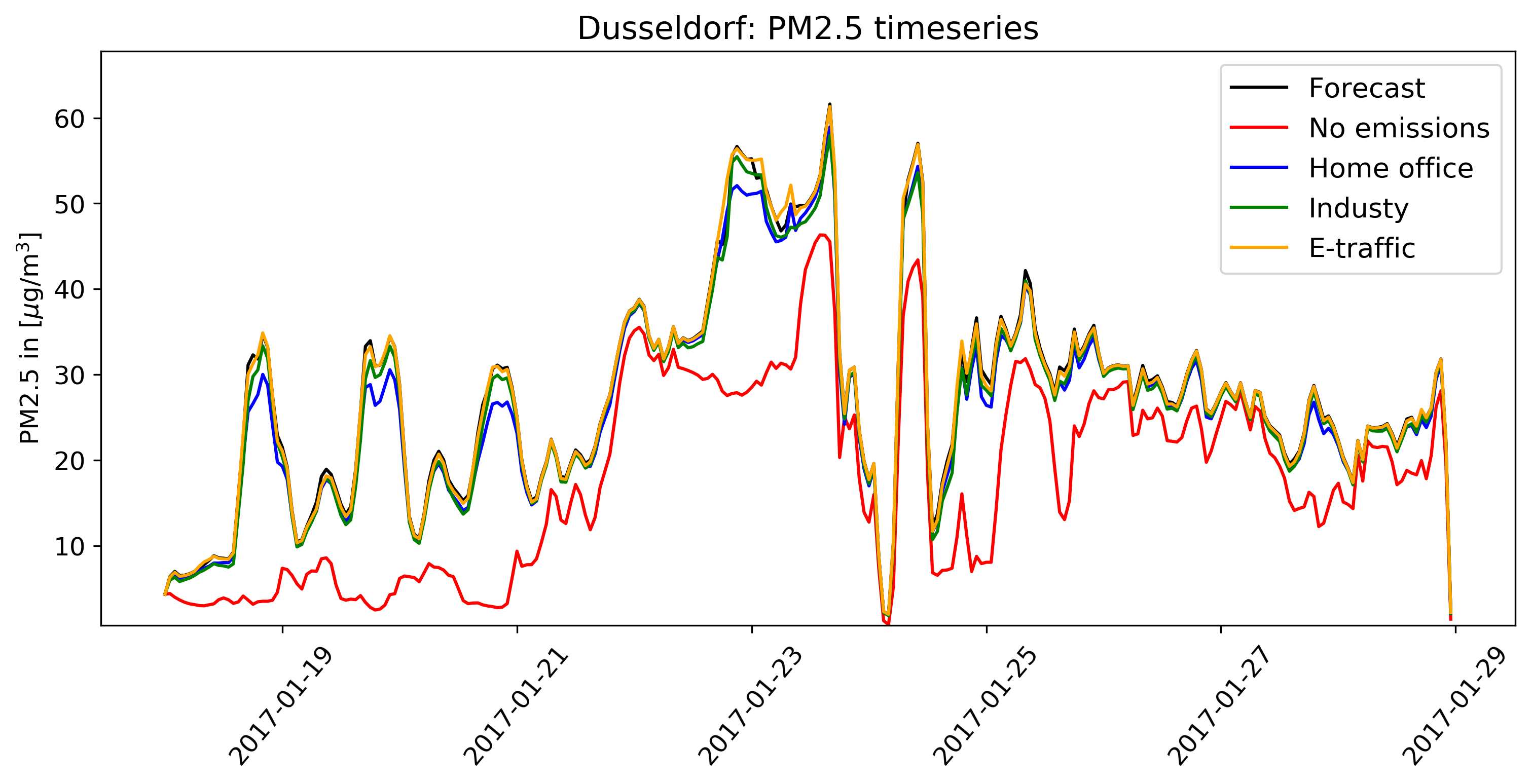
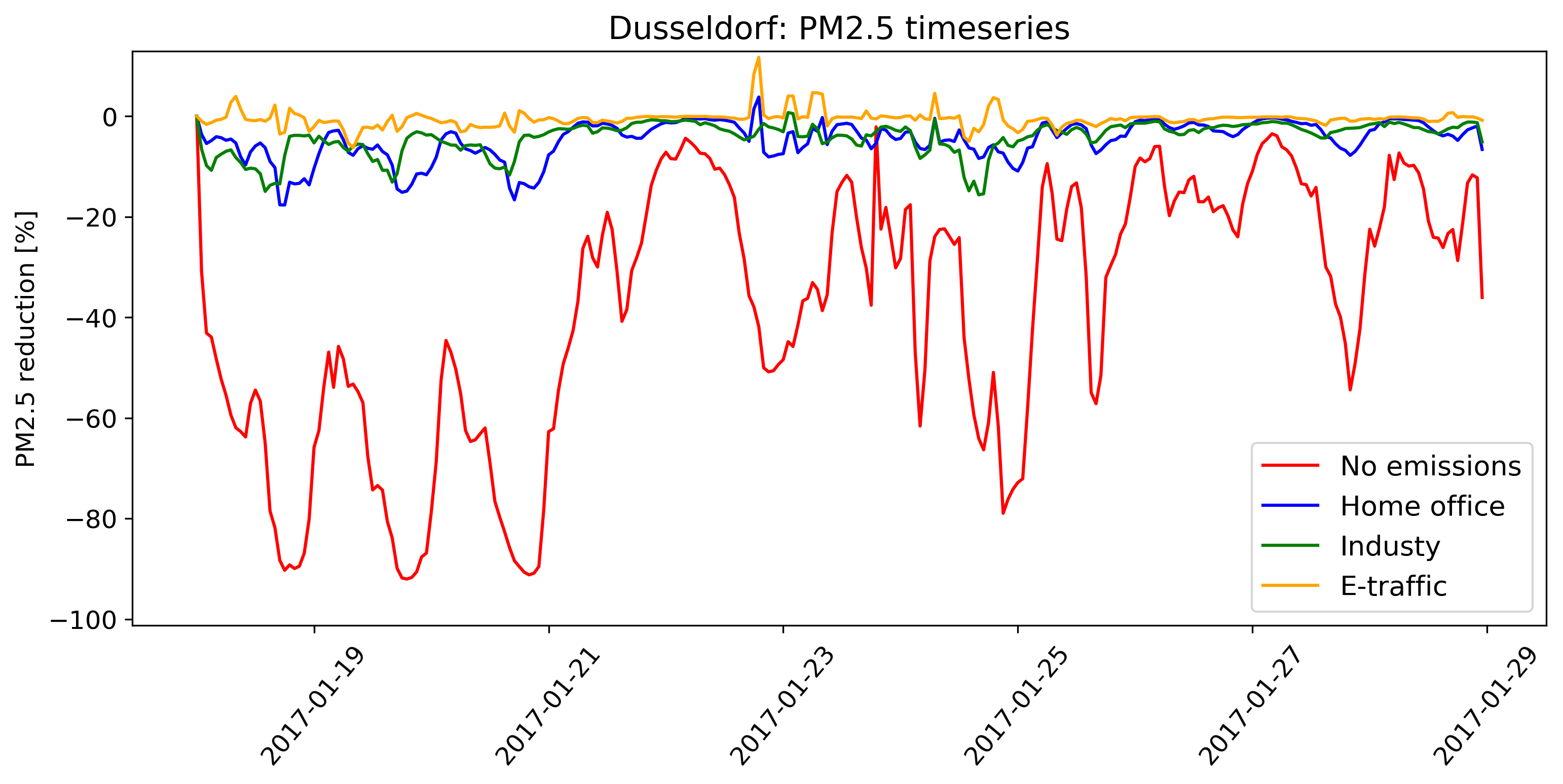
Figure 5: Temporal evolution of PM2.5 concentrations (upper panel) and its relative change due to the emission scenarios (lower panel) in Düsseldorf, North Rhine-Westphalia, during the high PM episode from 18 January 2017 to 29 January 2017.
Figure 5: Temporal evolution of PM2.5 concentrations (upper panel) and its relative change due to the emission scenarios (lower panel) in Düsseldorf, North Rhine-Westphalia, during the high PM episode from 18 January 2017 to 29 January 2017.
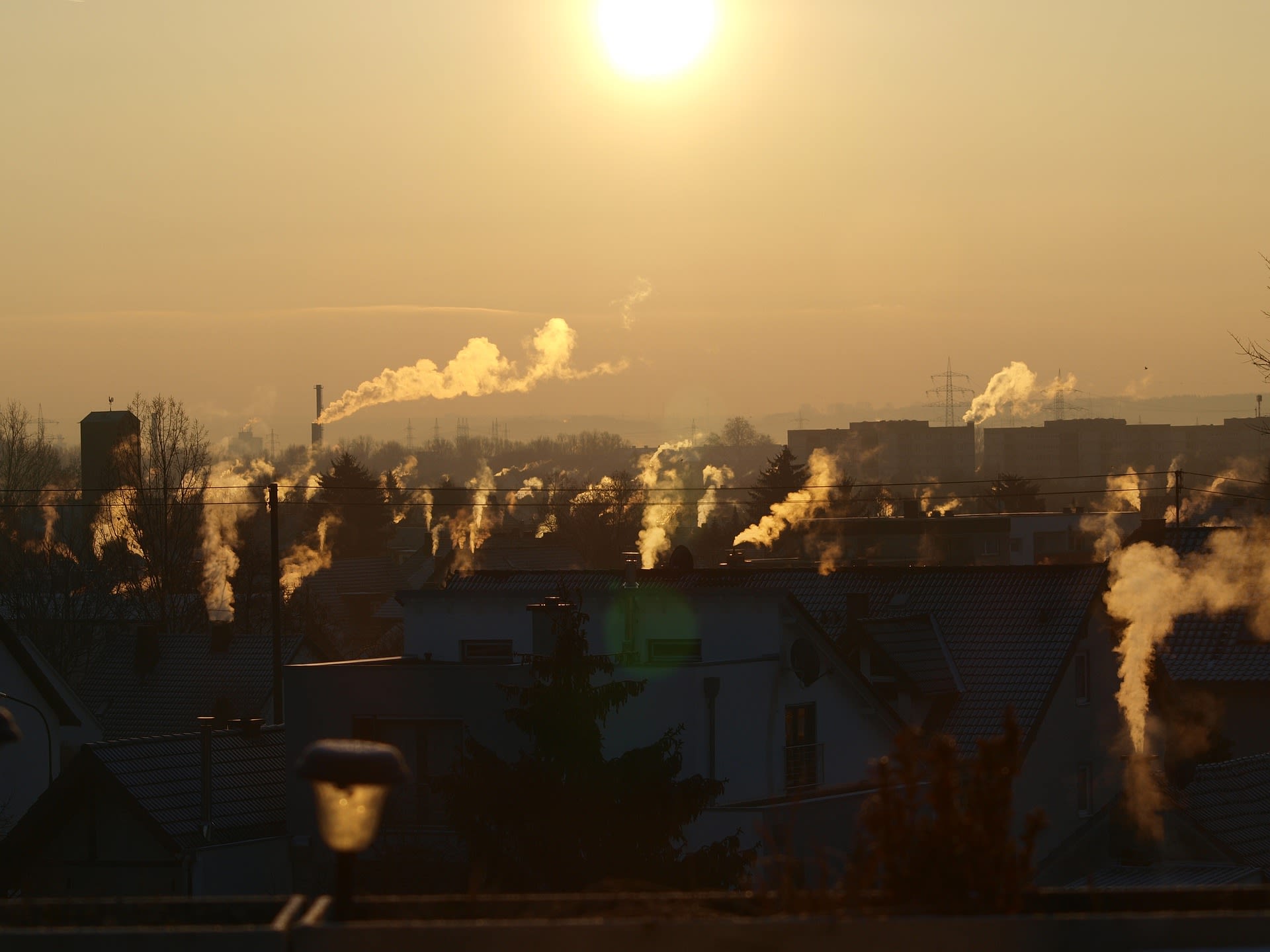
Figure 6: Example of a winter-time PM episode (Source: David Karich via Pixabay).
Figure 6: Example of a winter-time PM episode (Source: David Karich via Pixabay).
At the current stage of this use case, the user interface is developed. Here, the initial goal is to enable the initialization of air quality analysis jobs from the web-based interface on the supercomputer. Feedback about job status and data available will be retrievable from the interface. User-friendly design and the provision of intuitive user-related air quality products are in preparation. Furthermore, the use case demonstration simulations are currently induced. Here, it is envisioned to couple the EURAD-IM simulations of the selected episodes directly with simulations of the Extreme Digital Twin with a resolution of 4.4 km horizontal resolution.
Furthermore, a first downscaling model for ozone is under preparation. Preprocessing of the extensive set of historical EURAD-IM simulation data is conducted including the selection of suitable chemical and meteorological predictors as well as the inclusion of high-resolved emission information. Machine learning is not only used for downscaling but also for forecasting individual time series: With the MLAir (Machine Learning on Air Data) workflow environment, integrated into the Use Case graphical user interface, the user can generate forecasts at specific locations (air quality monitoring sites). Thus, compared to the numerical simulations, “first guess” predictions can be obtained instantaneously saving both costs and time. The underlying ML model is O3ResNet that originally produces a 4-day forecast of ground-level ozone and which is now extended to other air pollutants.
More information:
- Find more about Destination Earth Invitations to Tender here
- Return to Destination Earth webpage
